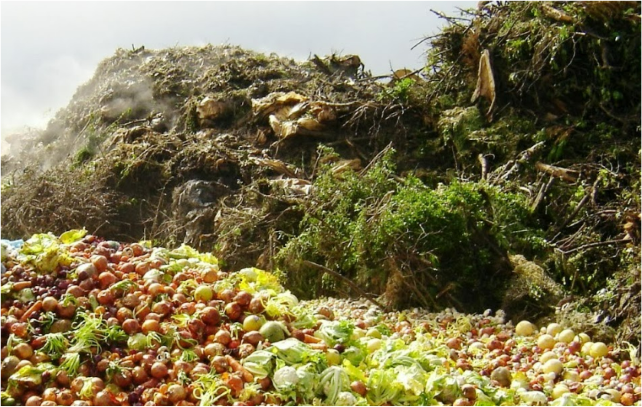
Brazilian researchers discovered, characterized, and validated the functions of two novel enzyme families with biotechnological potential. One way to reduce reliance on oil and other fossil fuels is to convert agroindustrial waste into societally relevant molecules such as biofuels and biochemicals.
As one of the world's major producers of plant biomass, Brazil is well-positioned to lead this transition, but lignocellulosic raw materials (containing lignin, hemicellulose, and cellulose) are difficult to deconstruct, or (to put it another way) resistant to microbial and enzymatic degradation.
Brazilian researchers are looking to nature for guidance on how to improve the depolymerization of these materials by increasing the availability of the sugars they contain. In Campinas (So Paulo state), a research team at the Brazilian Biorenewables National Laboratory (LNBR), an arm of the Brazilian Center for Research in Energy and Materials (CNPEM), conducted an interdisciplinary study involving omics (genomics, proteomics, metabolomics, etc.) and synchrotron light, and discovered two novel families of enzymes with biotechnological potential produced by microorganisms in capybara guts. The CNPEM is a private non-profit organization governed by the Ministry of Science, Technology, and Innovation (MCTI).
Both enzyme families act on plant cell wall components and can thus be used to produce biofuels, biochemicals, and biomaterials. Because it promotes lactose degradation, one of them has potential applications in the dairy industry.
"One of our research lines investigates Brazilian diversity in search of novel microbial mechanisms that reduce lignocellulosic waste recalcitrance." "We noted that the capybara is a highly adapted herbivore capable of obtaining energy from recalcitrant plant waste and that it has received little attention," said Mario Tyago Murakami, LNBR's Scientific Director and the study's last author in Nature Communications.
The capybara (Hydrochoerus hydrochaeris) is the world's largest living rodent and converts plant sugars into energy very efficiently; however, it is disliked in some quarters because it can harbour the tick that transmits Brazilian spotted fever, a rare but highly lethal infectious disease caused by the bacterium Rickettsia rickettsii.
"There have been numerous studies of ruminants, particularly bovines, but information on monogastric herbivores is limited." Capybaras digest grass and other plant matter in the cecum, the first part of the large intestine, unlike ruminants. Because capybaras in the Piracicaba region [of So Paulo state] feed on sugarcane, among other plants, we began with the hypothesis that microorganisms present in the animal's digestive tract might have unique molecular strategies to depolymerize this biomass, which is very important to Brazilian industry," said Gabriela Felix Persinoti, a bioinformatics researcher at LNBR.
Novel Methodology
Multi-omics (genomics, transcriptomics, and metabolomics were used to characterize molecular aspects of the capybara's gut microbiota) and bioinformatics were used in the study, as well as CNPEM's particle accelerators to analyze the discovered enzymes at the atomic level. "I can't recall any studies that combined all of these techniques, including the use of synchrotron light [an extremely bright electromagnetic radiation source that allows scientists to observe the inner structures of materials]," Murakami said. "Our analysis in this study drilled all the way down from the microbial community to the atomic structure of specific proteins."
The scientists examined samples taken from the cecum and rectum of three female capybaras euthanized in Tatu (Sao Paulo state) in 2017 as part of a local capybara population control policy. The animals were not pregnant and were not infected with R. rickettsii.
"Abdominal surgery was used to collect the cecal and rectal samples." Liquid nitrogen was used to freeze the material. "In the laboratory, DNA and RNA samples were extracted and submitted to large-scale sequencing using integrative omics," Persinoti explained.
The researchers also wanted to know which microorganisms were most active at the time the samples were collected, or which genes the microorganisms were expressing. They used metatranscriptomics, which uses RNA as its raw material, to accomplish this. "We also used metabolomics to confirm which metabolites the microorganisms were producing," Persinoti explained.
"We were able to decipher the role of gut microorganisms in achieving such highly efficient conversion of plant fibres and find out which genes were involved in the process by combining all of this information from omics, bioinformatics, and actual and potential gene expression."
Novel Enzymes and Cocktails
According to Persinoti, one of the newly discovered families, GH173, may have applications in the food industry, while another, CBM89, is related to carbohydrate recognition and may aid in the production of second-generation ethanol from sugarcane bagasse and straw.
The researchers are also working on enzyme cocktails with enzyme-producing fungi, and the newly discovered enzymes could be naturally included in these fungal platforms. "The discovery of novel enzyme families can be integrated with technology transfer to support innovation," Murakami explained. "Our group is very interested in exploring this great Brazilian biodiversity treasure, especially what we call dark genomic matter – parts of these complex microbial communities with unknown potential."
“Our centre has excellent infrastructure for this purpose, and this, along with our collaborations with public universities, has enabled competitive research of this type to take place in Brazil. Indeed, 99 percent of the work was completed here, from conceptual design to execution, analysis, and writing up. Given the enormous biodiversity of Brazil, it was only natural that we would have the conditions and capabilities to make high-impact discoveries like these," said Murakami.
(Source: Phys.org)
















